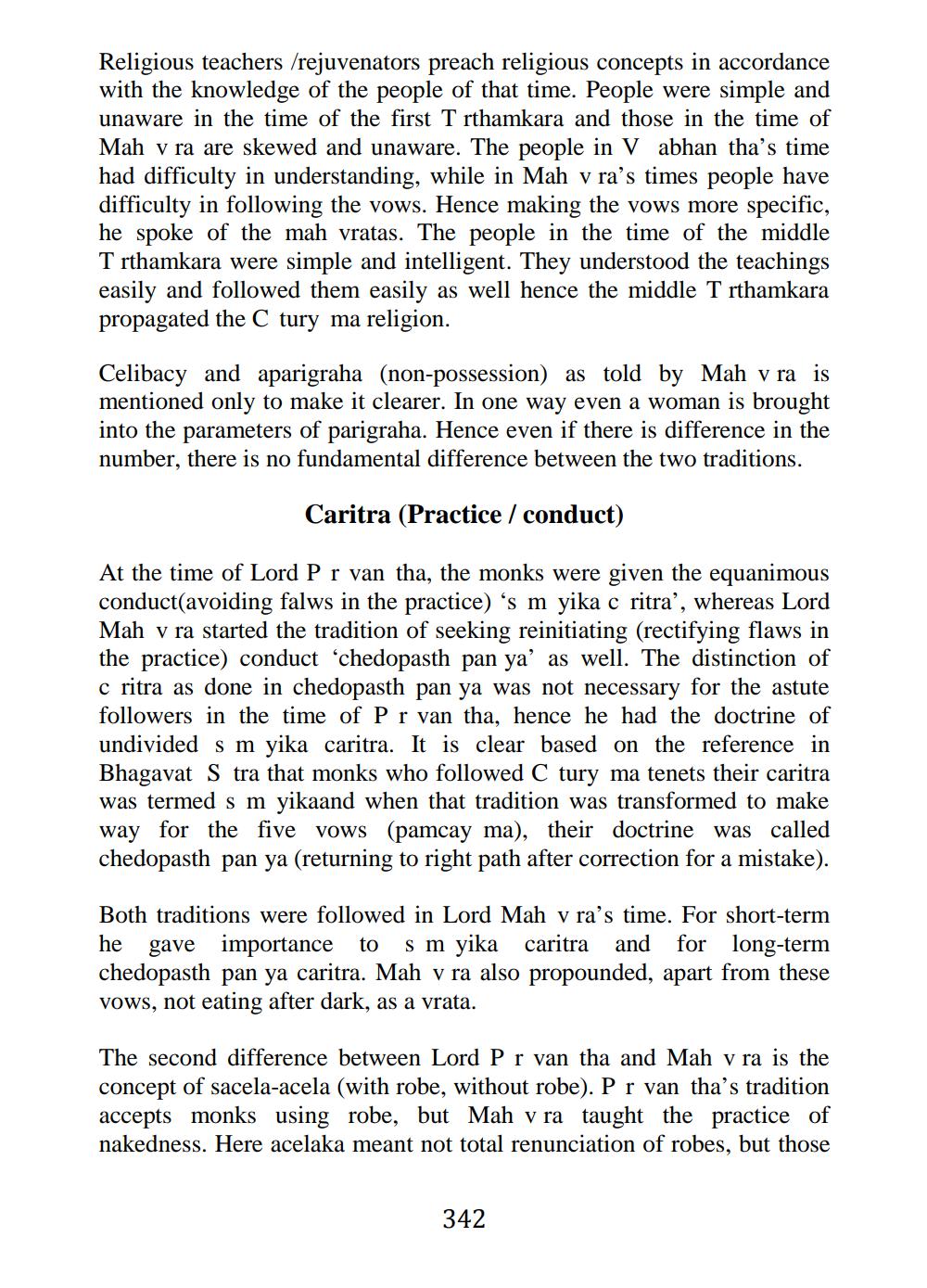________________
Religious teachers /rejuvenators preach religious concepts in accordance with the knowledge of the people of that time. People were simple and unaware in the time of the first T rthamkara and those in the time of Mah v ra are skewed and unaware. The people in V abhan tha's time had difficulty in understanding, while in Mah v ra's times people have difficulty in following the vows. Hence making the vows more specific, he spoke of the mah vratas. The people in the time of the middle T rthamkara were simple and intelligent. They understood the teachings easily and followed them easily as well hence the middle T rthamkara propagated the C tury ma religion.
Celibacy and aparigraha (non-possession) as told by Mah v ra is mentioned only to make it clearer. In one way even a woman is brought into the parameters of parigraha. Hence even if there is difference in the number, there is no fundamental difference between the two traditions.
Caritra (Practice / conduct)
At the time of Lord P r van tha, the monks were given the equanimous conduct(avoiding falws in the practice) 's m yika c ritra’, whereas Lord Mah v ra started the tradition of seeking reinitiating (rectifying flaws in the practice) conduct'chedopasth pan ya' as well. The distinction of c ritra as done in chedopasth pan ya was not necessary for the astute followers in the time of Pr van tha, hence he had the doctrine of undivided s m yika caritra. It is clear based on the reference in Bhagavat S tra that monks who followed C tury ma tenets their caritra was termed s m yikaand when that tradition was transformed to make way for the five vows (pamcay ma), their doctrine was called chedopasth pan ya (returning to right path after correction for a mistake).
Both traditions were followed in Lord Mah v ra's time. For short-term he gave importance to s m yika caritra and for long-term chedopasth pan ya caritra. Mah v ra also propounded, apart from these vows, not eating after dark, as a vrata.
The second difference between Lord P r van tha and Mah v ra is the concept of sacela-acela (with robe, without robe). P r van tha's tradition accepts monks using robe, but Mah v ra taught the practice of nakedness. Here acelaka meant not total renunciation of robes, but those
342




